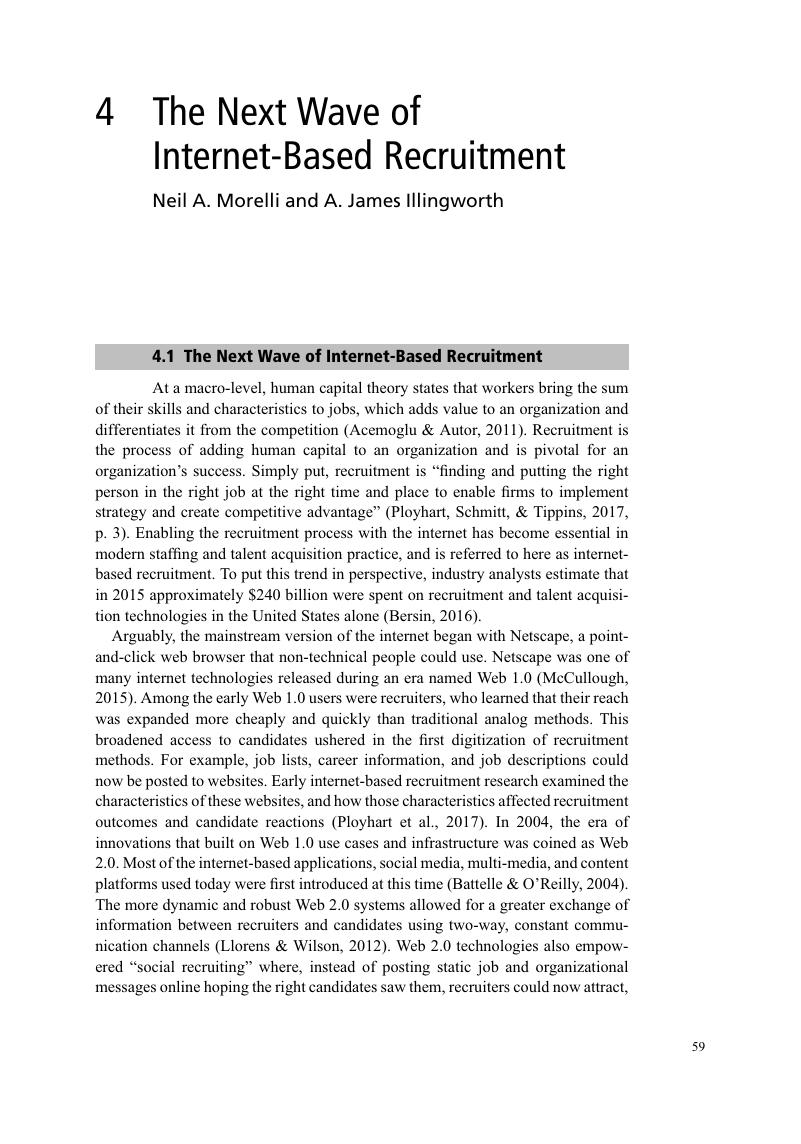Book contents
- The Cambridge Handbook of Technology and Employee Behavior
- The Cambridge Handbook of Technology and Employee Behavior
- Copyright page
- Dedication
- Contents
- Notes on Contributors
- Preface
- Acknowledgments
- Part I Technology in I-O Psychology
- Part II Technology in Staffing
- 4 The Next Wave of Internet-Based Recruitment
- 5 Applicant Reactions in Employee Recruitment and Selection
- 6 Applying Adaptive Approaches to Talent Management Practices
- 7 Playing with a Purpose
- 8 Mobile Assessment in Personnel Testing
- 9 The State of Technology-Enabled Simulations
- 10 The Use of Social Media in Staffing
- Part III Technology in Training and Development
- Part IV Technology in Leadership and Teams
- Part V Technology in Motivation and Performance
- Part VI Technology in Statistics and Research Methods
- Part VII Interdisciplinary Perspectives on Employees and Technology
- Index
- References
4 - The Next Wave of Internet-Based Recruitment
from Part II - Technology in Staffing
Published online by Cambridge University Press: 18 February 2019
- The Cambridge Handbook of Technology and Employee Behavior
- The Cambridge Handbook of Technology and Employee Behavior
- Copyright page
- Dedication
- Contents
- Notes on Contributors
- Preface
- Acknowledgments
- Part I Technology in I-O Psychology
- Part II Technology in Staffing
- 4 The Next Wave of Internet-Based Recruitment
- 5 Applicant Reactions in Employee Recruitment and Selection
- 6 Applying Adaptive Approaches to Talent Management Practices
- 7 Playing with a Purpose
- 8 Mobile Assessment in Personnel Testing
- 9 The State of Technology-Enabled Simulations
- 10 The Use of Social Media in Staffing
- Part III Technology in Training and Development
- Part IV Technology in Leadership and Teams
- Part V Technology in Motivation and Performance
- Part VI Technology in Statistics and Research Methods
- Part VII Interdisciplinary Perspectives on Employees and Technology
- Index
- References
Summary

Information
- Type
- Chapter
- Information
- Publisher: Cambridge University PressPrint publication year: 2019
References
Accessibility standard: Unknown
Why this information is here
This section outlines the accessibility features of this content - including support for screen readers, full keyboard navigation and high-contrast display options. This may not be relevant for you.Accessibility Information
- 4
- Cited by
